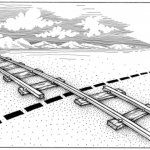 A central theme to The 8 Step Guide to Building a Social Workplace was that when looking to promote certain social behaviours at work, it’s important to look at the whole system that is the modern workplace. It’s my belief that a big reason behind the widespread failure of social behaviours to spread in the workplace is that too many elements of the workplace are promoting non-social behaviours. It’s important therefore to think of our work in a systemic way.
A central theme to The 8 Step Guide to Building a Social Workplace was that when looking to promote certain social behaviours at work, it’s important to look at the whole system that is the modern workplace. It’s my belief that a big reason behind the widespread failure of social behaviours to spread in the workplace is that too many elements of the workplace are promoting non-social behaviours. It’s important therefore to think of our work in a systemic way.
Consider Wharton’s Russell Ackoff, who suggests that systems must observe one of the following core conditions:
- The behaviour of each individual element has an effect on the behaviour of the whole – it’s common for many social business advocates to describe organizations in organic terms, and the body is a nice analogy for this particular condition, as there are no parts of the human body (appendix aside) that don’t effect the overall performance of the body.
- The behaviour of these elements and their effects on the whole are interdependent – ok, so this suggests that the way each individual part both behaves and impacts upon the whole organization is in itself dependent upon the actions of other parts of the organization. So how you pay people effects what you measure, which effects how people share information and so on. As each element is connected to others, it’s impossible for it to act independently.
- However subgroups of the elements are formed, each has an effect on the behaviour of the whole, and none has an independent effect on it – in other words, because all of the elements of the system are connected, it’s impossible for subgroups of each element to themselves be independent. For instance, the way you award bonuses cannot be independent of the organization, because pay is so tightly coupled with measurement, transparency and so on.
You can see from this that a system, of which an organization is surely one, cannot be divided into independent parts. If you want to change the organization therefore, you need to look at its component parts and look to change the whole system, not merely isolated elements of it.
You're quite right. Everything is connected, and has to be treated as such. Especially in something as complex as an organization.